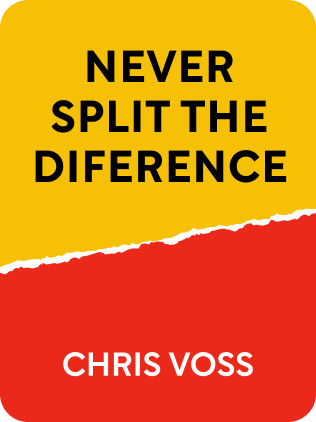

This article is an excerpt from the Shortform book guide to "Never Split the Difference" by Chris Voss and Tahl Raz. Shortform has the world's best summaries and analyses of books you should be reading.
Like this article? Sign up for a free trial here .
What is emotional labeling? How can labeling others’ emotions help you build rapport and develop intimacy?
As the name suggests, emotional labeling is the act of identifying and putting a label on an emotion. When you label someone’s emotions, you’re acknowledging their emotional state and making them feel like it’s safe for them to feel that way.
Keep reading for more about emotional labeling.
What Is Emotional Labeling?
Labeling shows the other party that you’ve heard, understood, and acknowledged their feelings. It builds essential rapport and doesn’t require you to give up anything.
So what is emotional labeling? Essentially, it’s identifying and vocalizing someone else’s emotion (applying a “label” to them). It’s a valuable shortcut to building intimacy, because it demonstrates insight and empathy on your part.
How to Label Emotions
First, you need to identify the other person’s emotions. This requires being perceptive: you have to be on the lookout for physical and verbal cues. Things like nervous hand gestures or sweating, for example, are telltale signs of anxiety. Ask your counterpart questions to explore what might be driving that anxiety. For now, be aware of hidden emotions and motivations that might lie beneath the surface.
Once you’ve figured out what they’re feeling, vocalize what they’re feeling back to them. But always phrase your labels to begin with neutral, qualified, third-person statements like, “It seems like,” “It looks like,” or “It sounds like.” Avoid “I” statements like “I think you’re…”.
“I” sounds like you’re more interested in yourself than in your counterpart. And remember, the whole point of emotional labeling is to convince them that you care about them.
Starting with third-party labels also gives you some plausible deniability. If the other person says that your emotional labelling of their anger, for example, is incorrect, you can always respond with something like, “I didn’t say you were angry. I said it seemed like you were angry.”
Why Labeling Works
There’s an old expression, “Sunlight is the best disinfectant.” And it’s true: labeling brings your counterpart’s fears and anxieties out into the open, thereby demystifying them, making them seem less scary, and forcing your counterpart to acknowledge and overcome them. Once you’ve done this, you can help them replace their negative emotions with positive, solution-based thoughts.
Example of Emotional Labeling
The author relates a story about a fundraiser for the Girl Scouts who was having a hard time getting a donor to write their next check. The donor seemed uninterested in supporting any of the projects the fundraiser was trying to sell her on.
The fundraiser used labeling to acknowledge the donor’s negative feelings by pointedly observing, “It seems as though you’re hesitant about these projects.” When the donor agreed, the fundraiser used a positive label to shift the dynamic, saying, “It seems that you’re really concerned about finding the right project for your money to support.”
The donor was satisfied and felt that she could trust the fundraiser. After more discussion, the meeting ended with a check from the donor.
Accusation Audits
A twist on emotional labeling is the accusation audit. This involves labeling your counterpart’s negative emotions—but about you specifically.
List every bad thing your counterpart could say about you at the beginning of the negotiation. This defuses the situation immediately and puts it all right out there in the open.
This might sound like, “I know I didn’t hand in that sales report on time. You probably think I’m lazy, uncommitted, inattentive to detail, and that I don’t care about wasting your time or everybody else’s.”
Then, you ask for input based on that list. This is where the tactic really works its magic. Most of the self-accusations you’ve labeled sound ridiculous and even paranoid when you vocalize them one right after the other. You’ll actually trigger their innate human empathy by painting the worst possible picture of yourself to them: they’ll want to reassure you that you’re not as bad as you’ve portrayed yourself. The admissions and acknowledgments cause the other party to seek common ground.
Your counterpart might respond to the above accusation audit by saying, “OK look, I don’t think you’re lazy or that you don’t care. This was definitely a mistake but let’s try and fix it.” Right away, you’ve reset the negotiating dynamic. It’s all based in the basic psychological need that all humans have for empathy and connection: we all have an inherent need to forge some kind of connection to the person across the table. Through an accusation audit, you’ve forced them to make the next move in building that empathy.
We actually do this intuitively all the time. Anytime you preface a critique of someone with “I don’t want to sound harsh, but…” you’re doing an accusation audit. You’re priming them to think and respond, “No, you’re not being harsh.” This makes them empathize with you: you’re making them concerned about your guilt at being harsh rather than the critique you’re actually delivering.

———End of Preview———
Like what you just read? Read the rest of the world's best book summary and analysis of Chris Voss and Tahl Raz's "Never Split the Difference" at Shortform .
Here's what you'll find in our full Never Split the Difference summary :
- Lessons learned from years as an FBI hostage negotiator
- Why negotiation is about emotional appeals, not rational ones
- The 5 methods for tactical empathy, which gets you what you want by focusing on the other person's feelings






